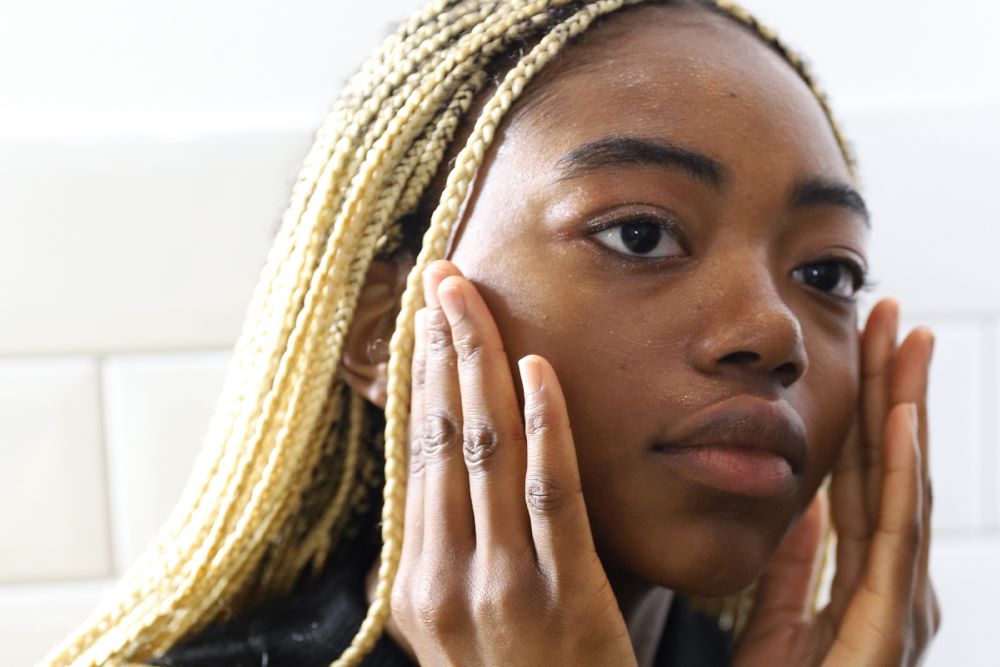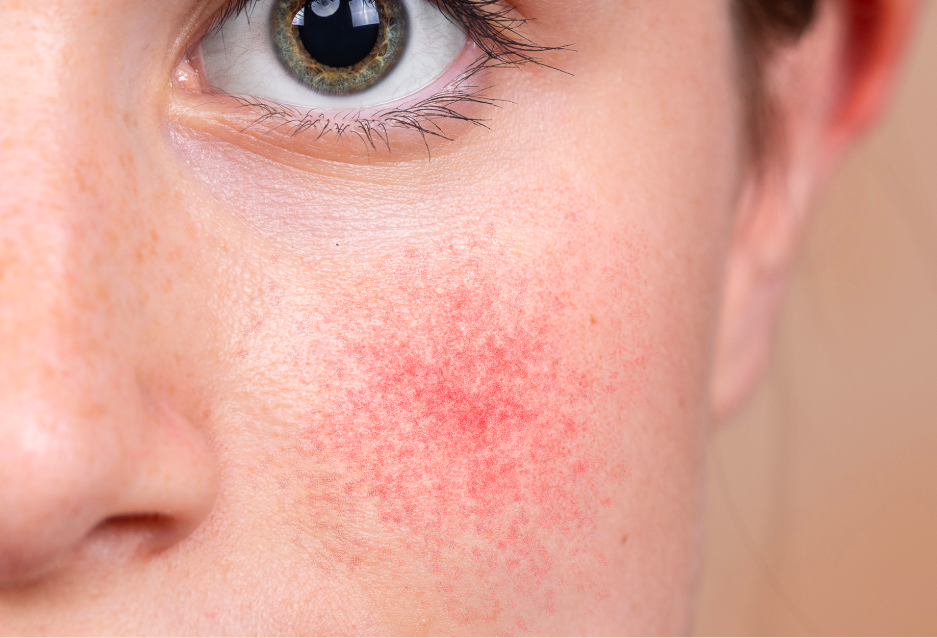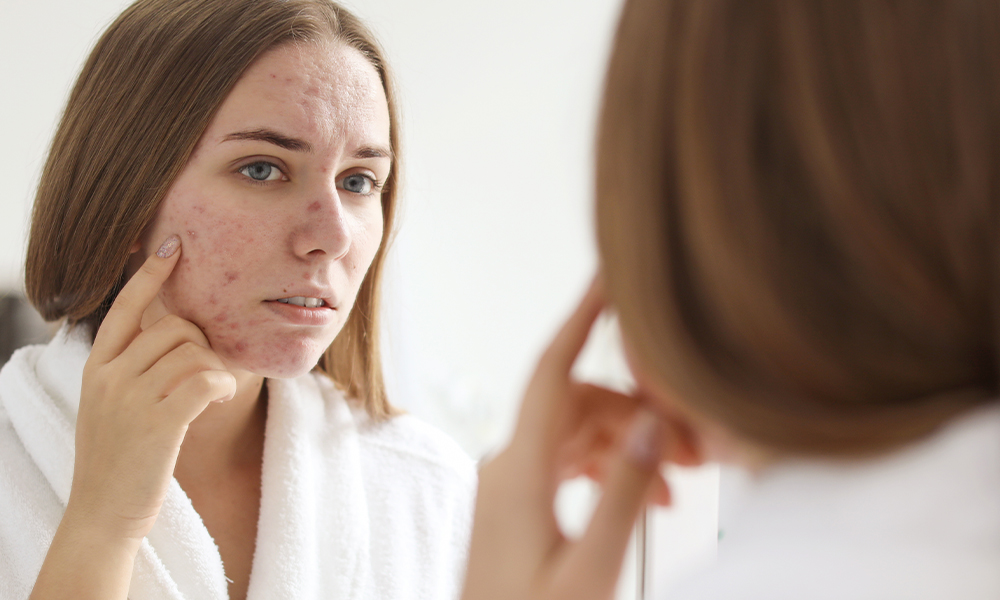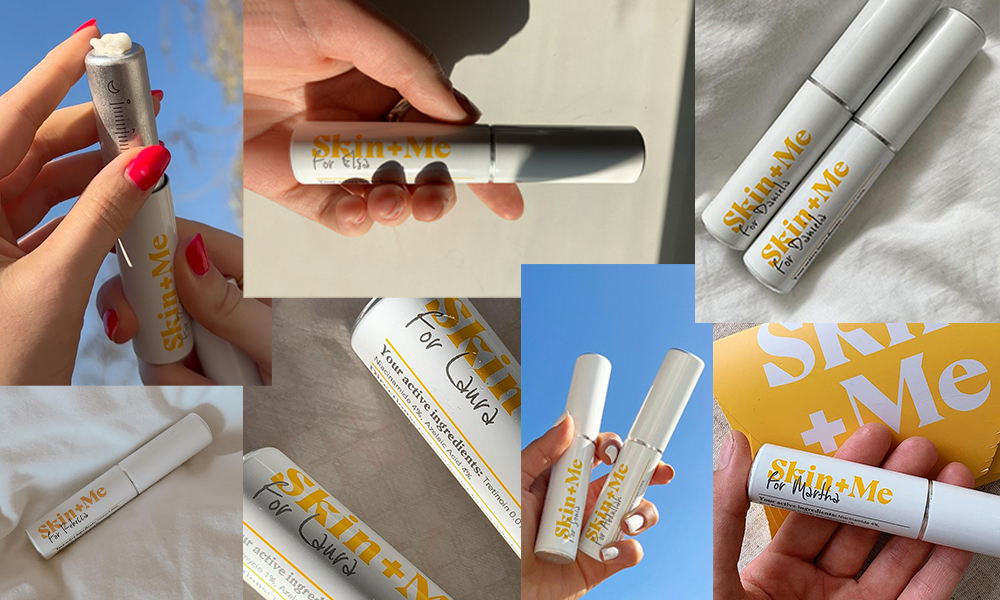Rosacea Awareness Month: Five Things to Know About Rosacea

Link to share article here:
Ask A Dermatologist: What Are Sebaceous Filaments?
Who hasn’t spent longer than they’d like to admit examining every bump or blemish on the surface of their skin? Add in the popularity of pore strips and guilty pleasure extraction videos, and it’s easy to assume that everyone is obsessed with the contents of their pores.
That’s why today we’re introducing you to sebaceous filaments. We’ll explain what they are, how to identify them, and the skincare ingredients to look out for if you want to keep your pores looking clear.
What are sebaceous filaments?
You might have noticed a scattering of light-coloured dots or tiny bumps on your skin, especially around your nose or chin. They aren’t spots, but they don’t seem as large or dark as traditional blackheads either – so what actually are they? Chances are they’re probably something called “sebaceous filaments”.
“Sebaceous filaments are normal structures in the skin and line the inside of the hair follicle and help to remove sebum from the sebaceous glands to the surface of the skin,” explains Dr Jason Thomson, Head of Medical at Skin + Me. “They look like grey dots on the skin’s surface and they’re often more prominent in those with oiler skin types. They’re part of normal, healthy skin.”
What is the difference between sebaceous filaments and blackheads?
You might be thinking that sebaceous filaments sound pretty similar to blackheads, and you’d be right – they both show up as darker dots or bumps on the skin. So, how can you tell them apart?
“It’s worth pointing out that blackheads are different to sebaceous filaments and the two are often confused with one another,” says Dr Jason. “Blackheads and whiteheads are considered mild forms of acne,” says Dr Jason. Acne occurs when clogged pores cause a buildup of the bacteria Cutibacterium Acnes, creating comedones, which can be open (like whiteheads) or closed (blackheads).
Sebaceous filaments on the other hand are not a form of acne – they’re totally harmless and not linked to any skin conditions. If you do remove them, they’ll likely reappear within a few weeks. Blackheads on the other hand are more like spots – they could pop up in the exact same place by chance but it’s more unlikely.
How can you get rid of sebaceous filaments?
As Dr Jason explained, it’s important to remember that sebaceous filaments are a totally normal feature of your skin. They’re also really, really small – if you need to get up close and personal with the mirror to see them, chances are nobody else is really noticing them.
You might have seen people on social media “removing” sebaceous filaments by squeezing them, so a thin, waxy structure pops out. We wouldn’t recommend this, as satisfying as it might seem to remove the contents. You risk causing trauma and scarring to the skin, and the filaments will probably reappear in a few weeks, so it’s definitely not worth the damage.
If you want to minimise the appearance of sebaceous filaments, the best thing to do is build a healthy, stripped back skincare routine that balances any overproduction of oil. Here’s what our experts recommend:
AM
Cleanse
Start your morning with a gentle cleanser. We recommend using the Skin + Me Purify + Prep Clarifying Cleanser, which will wash away excess oil without stripping your skin.
Treat
If you use a morning serum, such as a Vitamin C or Azelaic Acid, to target your skin concerns then this is the time to use it.
Moisturise
Keep your skin hydrated with a non-comedogenic moisturiser (this means it won’t clog your pores. If you’re looking for a new favourite, our Skin + Me Soothe + Smooth Light Moisturiser has a weightless gel-cream consistency that you’ll love.
Protect
Don’t forget to protect your skin from UV rays, no matter the weather. Skin + Me Daily Defence Sunscreen is SPF 50 and oil-free, so it’s a great pick for oily or acne-prone skin.
PM
Cleanse
A double cleanse is a great way to wash away the day. Start with a micellar water or cleansing balm to remove makeup and sunscreen, before moving onto your gel or foaming cleanser.
Treat
An evening treatment including active ingredients is the best way to keep your skin looking clear and even. If you’re a Skin + Me member, your Dermatology Clinician will analyse your skin and pick the best active ingredients for you, before creating a custom-made night cream to minimise the appearance of your pores.
Azelaic acid is an antioxidant that helps to unclog pores, so it’s an excellent addition to your routine. You also might want to explore using retinoids – retinol and its prescription-only sibling tretinoin speed up skin cell turnover, for clearer, more even skin.
Niacinamide is a form of Vitamin B that regulates oil production and enhances the overall texture and tone of the skin, so it could be beneficial for those with noticeable sebaceous filaments.
Some people also find acids such as BHAs and AHAs useful – just be careful not to use them alongside other powerful ingredients like retinoids.
Moisturise
Again, use your non-comedogenic moisturiser to stop your skin from drying out overnight – even if your skin is oily, it still needs hydration.
Final thoughts
Sebaceous filaments are nothing to worry about – they’re a perfectly normal part of your skin. Rather than focusing too much on these tiny dots, we’d recommend creating a simple yet effective routine that will minimise their appearance and promote healthy skin. With the right combination of active ingredients, and a little patience, you can enhance your glow and boost your skin confidence.
New to Skin + Me? Get your first month of personalised skincare for £4.99 with promo code DOSE – complete our quick consultation here.
Looking for a routine refresh? Add the Dream Routine to your Skin + Me subscription.
In need of a restock? Head to The Skincare Shop for one-off purchases of your Routine Essentials.



